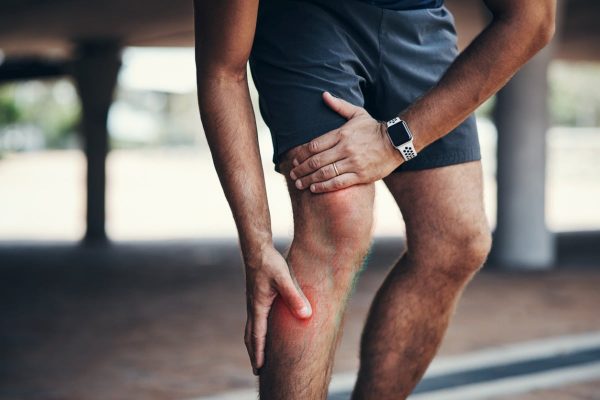
Medial Tibial Stress Syndrome (MTSS), commonly known as shin splints, is a frequent complaint among athletes, particularly runners, dancers, and military personnel. It manifests as pain along the inner edge of the shinbone (tibia) and is often linked to repetitive stress and overuse of the lower legs. However, an important question arises: does inactivity exacerbate this condition?
Understanding Medial Tibial Stress Syndrome
MTSS occurs due to inflammation of the muscles, tendons, and bone tissue around the tibia. The pain typically starts as a dull ache during exercise and can become more severe with continued activity. Factors contributing to MTSS include:
1. Overuse: Repetitive activities, especially those involving high impact on the lower legs, are primary culprits.
2. Improper Footwear: Wearing shoes that do not provide adequate support can lead to MTSS.
3. Flat Feet or High Arches: These structural issues can cause improper alignment and stress on the tibia.
4. Sudden Changes in Activity Level: Rapid increases in the intensity or duration of exercise can trigger shin splints.
The Role of Inactivity in MTSS
While overuse is a well-recognized cause of MTSS, the role of inactivity is less clear. However, inactivity can indeed have negative implications for those suffering from MTSS:
1. Muscle Weakness: Prolonged inactivity can lead to muscle atrophy, particularly in the muscles that support the tibia. This can reduce the stability of the lower leg and make it more susceptible to stress and injury once activity is resumed.
2. Decreased Flexibility: Lack of movement can result in stiffness and decreased flexibility in the muscles and tendons surrounding the tibia. This can exacerbate pain and delay recovery.
3. Poor Circulation: Inactivity can reduce blood flow to the lower legs, hindering the healing process and potentially worsening the condition.
4. Weight Gain: Sedentary lifestyles often lead to weight gain, which can place additional stress on the lower legs when activity is resumed.
Balancing Activity and Rest
The key to managing MTSS lies in finding a balance between activity and rest. Complete inactivity is rarely recommended, as it can lead to the negative consequences mentioned above. Instead, a modified approach to exercise and a comprehensive treatment plan are essential. For example, try walking for shin splints instead of jumping into a run!
How CARESPACE Can Help
At CARESPACE, we understand the complexities of MTSS and the importance of a tailored, multidisciplinary approach to treatment. Our team of regulated health professionals collaborates to create personalized care plans that address the root causes of MTSS and promote long-lasting recovery. Here’s how we can help:
1. Comprehensive Assessment: Our practitioners conduct thorough assessments to understand the underlying causes of your MTSS, including biomechanical issues, muscle imbalances, and activity levels.
2. Customized Exercise Programs: Our physiotherapists and kinesiologists design exercise programs that strengthen the muscles supporting the tibia, improve flexibility, and enhance overall lower leg stability. These programs are carefully tailored to your specific needs and progress gradually to prevent overuse.
3. Manual Treatment: Our chiropractors and RMTs use manual therapy techniques to alleviate pain, reduce inflammation, and promote healing. This can include joint adjustments, soft tissue massage, and myofascial release.
4. Nutritional Guidance: Our dietitians provide nutritional advice to support healing and overall health, ensuring your body has the nutrients it needs to recover and perform at its best.
5. Education and Prevention: We educate our clients on proper footwear, running techniques, and strategies to prevent MTSS from recurring. This empowers you to take control of your health and avoid future injuries.
Collaboration Between Physiotherapists and Chiropractic Doctors
One of the unique aspects of CARESPACE is the collaborative approach between our physiotherapists and chiropractic doctors. Here’s how they work together to address MTSS:
1. Integrated Assessments: Both physiotherapists and chiropractors contribute their expertise to assess your condition comprehensively. This ensures that all aspects of your health are considered, from muscle imbalances to joint misalignments.
2. Coordinated Treatment Plans: By working together, our physiotherapists and chiropractors develop coordinated treatment plans that incorporate both exercise and manual treatment. This dual approach addresses both the symptoms and the underlying causes of MTSS.
3. Holistic Care: Our collaborative approach extends beyond just treating the injury. We focus on your overall well-being, including mental health support from our psychotherapists if needed, to ensure a holistic recovery process.
4. Continuous Monitoring and Adjustment: Your progress is continuously monitored, and treatment plans are adjusted as needed to ensure optimal recovery. This dynamic approach allows for flexibility and responsiveness to your changing needs.
Inactivity can indeed worsen MTSS by leading to muscle weakness, decreased flexibility, poor circulation, and weight gain. However, the solution is not simply to avoid rest but to find a balanced approach that includes modified activity and a comprehensive treatment plan. At CARESPACE, we offer a multidisciplinary approach to managing MTSS, with personalized care plans that combine the expertise of physiotherapists, chiropractic doctors, and other health professionals. This collaborative effort ensures that you receive the most effective treatment for a fast, effective, and long-lasting recovery. If you’re struggling with MTSS, reach out to CARESPACE to start your journey towards a pain-free and active life.
For an in-depth look at contributing factors, rehabilitation, and prevention, explore our Medial Tibial Stress Syndrome Hub.




